Brain Tumor
A brain tumor is a mass of abnormally growing cells in the brain or skull Many different types of brain tumors exist. Some brain tumors are noncancerous (benign), and some brain tumors are cancerous (malignant).
Whether benign or malignant, all brain tumors are serious. A growing tumor eventually will compress and damage other structures in the brain.
.png)
Symptoms of Brain Tumors
Brain tumor symptoms vary based on the location of the tumor within the brain and the size of the tumor. Severity of symptoms does not indicate how large a tumor is - small tumors can cause severe symptoms.
Headaches are a common symptom of brain tumors, but are usually accompanied by another symptom. Brain tumor associated headaches often have characteristics that set them apart from headaches that are related to less serious conditions.
Other brain tumor symptoms may include:
- Nausea and/or vomiting
- Seizures
- Visual and hearing disturbances (hallucinations)
- Problems with memory
- Slower thought process
- Weakness on one side of the body, or an abnormal gait
- Fatigue or increased sleep
- Personality changes
Warning symptoms : Altered sensorium, rapid vision loss, repeated episodes of seizures,hemiplegia(extreme weakness of one half of body).
Diseases
Primary brain tumors begin when normal cells acquire errors (mutations) in their DNA. These mutations allow cells to grow and divide at increased rates and to continue living when healthy cells would die. The result is a mass of abnormal cells, which forms a tumor.
Primary brain tumors are much less common than are secondary brain tumors, in which cancer begins elsewhere and spreads to the brain. Many different types of primary brain tumors exist. Each gets its name from the type of cells involved. Examples include:
Gliomas. These tumors begin in the brain or spinal cord and include astrocytomas, ependymoma, glioblastomas, oligoastrocytomas and oligodendrogliomas
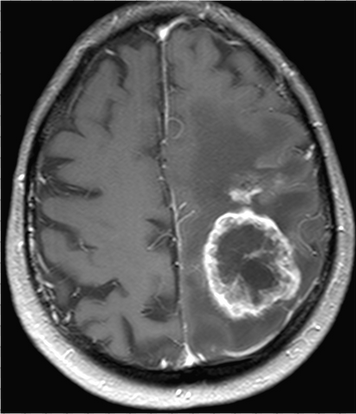
Meningiomas. A meningioma is a tumor that arises from the membranes that surround your brain and spinal cord (meninges). Most meningiomas are noncancerous.
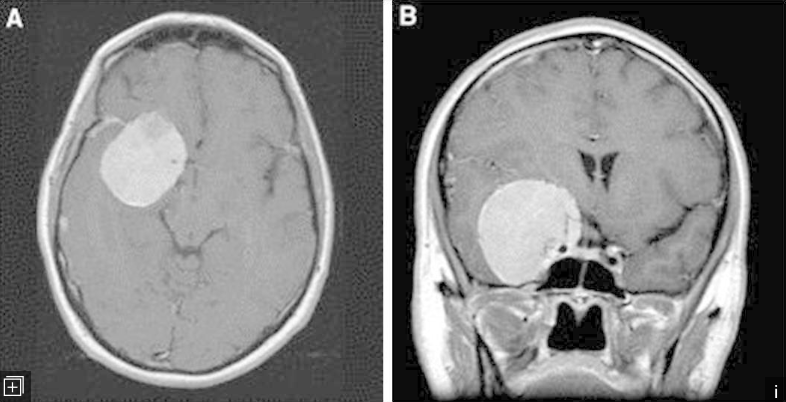
Acoustic neuromas (schwannomas). These are benign tumors that develop on the nerves that control balance and hearing leading from your inner ear to your brain.
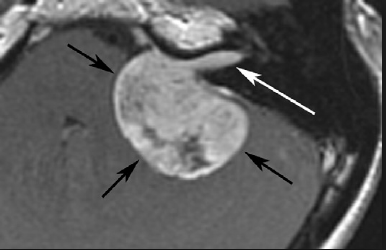
Pituitary adenomas. These are mostly benign tumors that develop in the pituitary gland at the base of the brain. These tumors can affect the pituitary hormones with effects throughout the body.
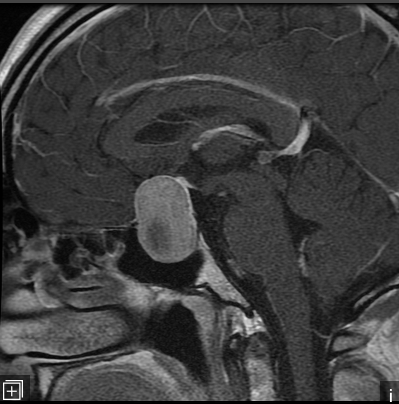
Medulloblastomas. These are the most common cancerous brain tumors in children. A medulloblastoma starts in the lower back part of the brain and tends to spread through the spinal fluid. These tumors are less common in adults, but they do occur.
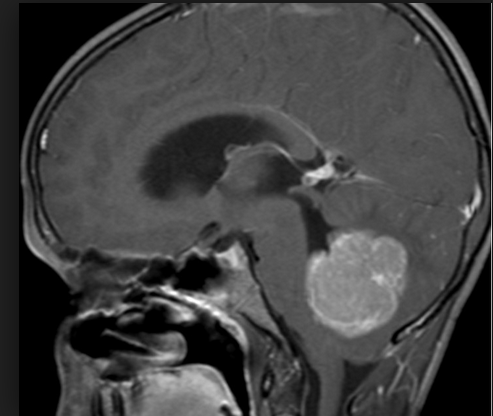
PNETs. Primitive neuroectodermal tumors (PNETs) are rare, cancerous tumors that start in embryonic (fetal) cells in the brain. They can occur anywhere in the brain.
Germ cell tumors. Germ cell tumors may develop during childhood where the testicles or ovaries will form. But sometimes germ cell tumors move to other parts of the body, such as the brain.
Craniopharyngiomas. These rare, noncancerous tumors start near the brains pituitary gland, which secretes hormones that control many body functions. As the craniopharyngioma slowly grows, it can affect the pituitary gland and other structures near the brain.
Cancer that begins elsewhere and spreads to the brain
Secondary (metastatic) brain tumors are tumors that result from cancer that starts elsewhere in your body and then spreads (metastasizes) to brain.
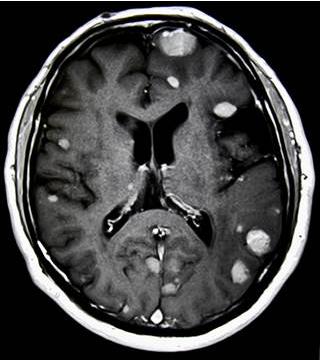
Secondary brain tumors most often occur in people who have a history of cancer. But in rare cases, a metastatic brain tumor may be the first sign of cancer that began elsewhere in our body.
Secondary brain tumors are far more common than are primary brain tumors.
Any cancer can spread to the brain, but the most common types include:
- Breast cancer
- Colon cancer
- Kidney cancer
- Lung cancer
- Melanoma
Brain Tumor Causes
We dont know exactly what causes brain tumors, but studies do suggest that there may be many factors that play a role in their development. Risk factors for brain tumors include:
- Exposure to radiation - Including medical radiation
- A family history of certain genetic disorders like neurofibromatosis, tuberous sclerosis, Von Hippel-Lindau disease, and Li-Fraumeni syndrome
- Having a compromised immune system (especially with CNS lymphomas and AIDS)
- Heavy cell phone use has been associated with an increased risk of glioma
Diagnosing Brain Cancer
A neurological exam : neurological exam may include, among other things, checking vision, hearing, balance, coordination, strength and reflexes. Difficulty in one or more areas may provide clues about the part of brain that could be affected by a brain tumor.
If a doctor suspects a brain tumor, one of the first steps in getting an accurate diagnosis of brain cancer is through magnetic resonance imaging (MRI). This imaging test gives physicians an extraordinary view of the brain and may be the only test needed to identify the possible presence of a brain tumor. In some limited cases, a CT scan may be used.
Sometimes ,PET scans, which help doctors see the activity of the brain, may help diagnose primary brain cancer and also very useful with a metastatic disease.
Collecting and testing a sample of abnormal tissue (biopsy)
Often it is a brain biopsy that confirms the malignancy and type of brain tumor present. Brain biopsies are often done as part of a surgery to remove the tumor. The sample tissue can be examined in the operating room, allowing the surgeon to make a decision about whether to proceed with surgical treatment or not
More extensive evaluation of the tumor specimen will also be done by a pathologist. It may take several days to receive results.
In some cases, a closed biopsy, also called a stereotactic biopsy, is performed when the tumor is located in a region of the brain that is difficult to reach. It is the least invasive type of biopsy, but does carry risks. A lumbar puncture (spinal tap) is sometimes also done.
Treatments
The tumor type, location, and grade will determine the treatment plan. Curative treatment is possible with some tumors, while slowing the growth or simply relieving severe symptoms may be the goal of treatment for others. Unfortunately, there may be no recommended course of treatment for some brain tumors
Surgery –Surgery is the removal of the tumor and some surrounding healthy tissue during an operation. It is usually the first treatment used for a brain tumor and is often the only treatment needed for a low-grade brain tumor. Removing the tumor can improve neurological symptoms, provide tissue for diagnosis, help make other brain tumor treatments more effective, and, in many instances, improve the prognosis of a person with a brain tumor.
Surgical approaches in brain tumor treatment include tumor resection (complete removal) or debulking (removing as much as possible). In some cases, surgery may be the only treatment method that is required, but others may need other treatment methods such as radiation therapy. Surgery followed by radiation therapy is common with many tumors.
Radiation therapy - Radiation therapy may be used alone, or following surgery for some brain tumors.Side effects may include problems with memory loss and concentration. Swelling can be a side effect as well, which is often treated with corticosteroids.
Radiosurgery -Stereotactic radiosurgery is not a form of surgery in the traditional sense. Instead, radiosurgery uses multiple beams of radiation to give a highly focused form of radiation treatment to kill the tumor cells in a very small area. Each beam of radiation isnt particularly powerful, but the point where all the beams meet — at the brain tumor — receives a very large dose of radiation to kill the tumor cells. Radiosurgery is usually more preferable treatment for benign tumors and with smaller size.
There are different types of technology used in radiosurgery to deliver radiation to treat brain tumors, such as a Gamma Knife or Cyberknife.
Radiosurgery is typically done in one treatment, and in most cases you can go home the same day.
Chemotherapy - Chemotherapy may be utilized in some tumors that are known to respond well to chemotherapy agents such as CNS lymphoma, gliomas, or medullablastomas.
Targeted therapy - Targeted therapy drugs are a newer category of treatment which directly attacks changes in cancer cells. Avastin is one of these drugs .
Rehabilitation after treatment - Because brain tumors can develop in parts of the brain that control motor skills, speech, vision and thinking, rehabilitation may be a necessary part of recovery. Your doctor may refer you to services that can help, such as:
- Physical therapy can help you regain lost motor skills or muscle strength.
- Occupational therapy can help you get back to your normal daily activities, including work, after a brain tumor or other illness.
- Speech therapy with specialists in speech difficulties (speech pathologists) can help if you have difficulty speaking.
- Tutoring for school-age children can help kids cope with changes in their memory and thinking after a brain tumor.
Facilities
Our team has very experienced group of neurosurgeons,radiosurgery expert,intensivist and dedicated neuro staff.
We have state of the art operation theatre fully equipped with best of instruments and technologies across the world.
- OPMI PENTERO 900 Microscope equipped with ALA dye fluorescence facility
- Endoscope with both cranial and spinal attachments
- Electa Leksell Frame for Deep brain stimulation,lesioning and stereotactic biopsies
- Navigation system : Navigation system for targeted approach to cranial and spinal tumors,making surgery accurate,with smaller incisions,less blood loss,less time consuming and making possible complete excision of tumors.
- O Arm : provides us ability to operate on most complex of brain and spinal cases with accuracy and ease with considerable reduction in incidence of complications
- Intraoperative neurophysiological monitoring : for nerve sparing,epilepsy surgeries and deep brain stimulation
- Cusa: to help safely remove tumors with location and consistency difficult to approach
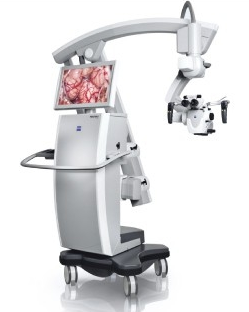

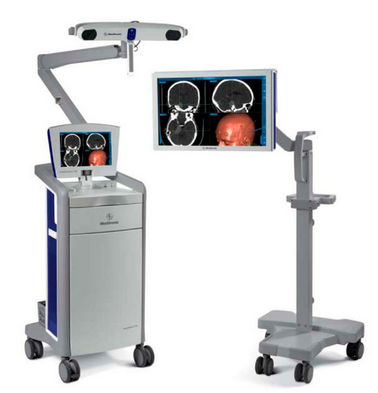
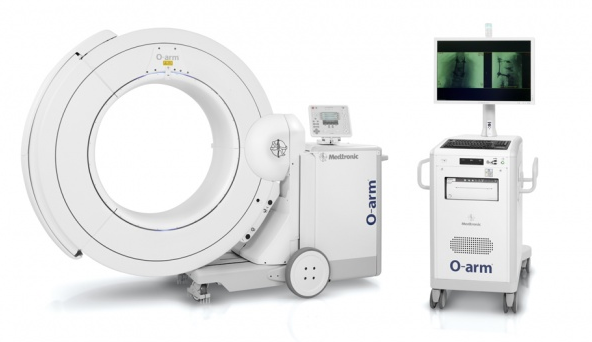
 for conditions like Brain Tumor, Stroke, Spine Surgery, Movement Disorder, Aneurysm, Headache, Epilepsy, etc. _ AGRIM NEUROSERVICES_files/AGRIM-NEUROSERVCES.png)

